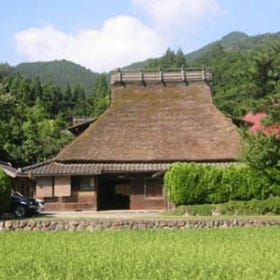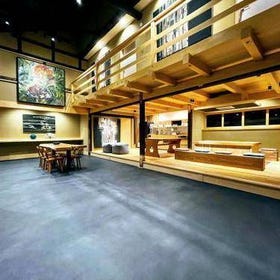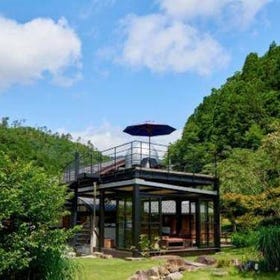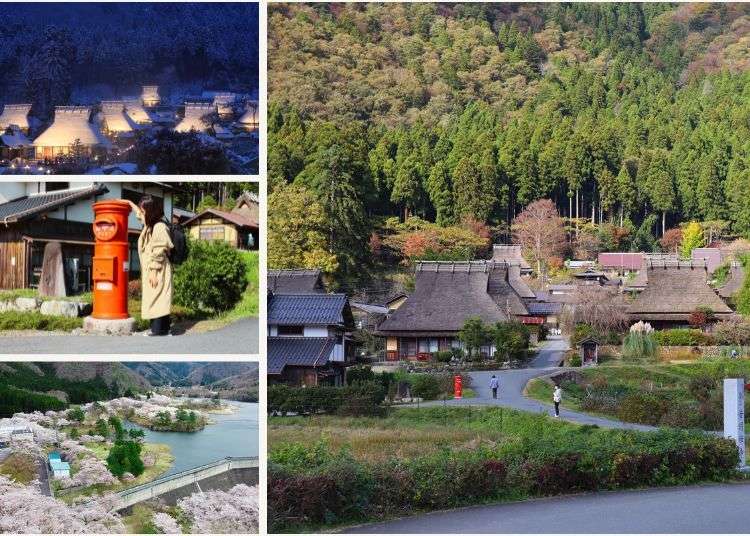
Kyoto's Must-See Scenic Beauty! Travel Guide to Miyama Kayabuki-no-Sato, Miyama Town
- Written by: Miyu Shimada
Japan offers a wealth of unique cultural experiences, from temples and shrines to soothing hot springs. Yet while Kyoto remains an internationally popular destination for tourists, its allure extends beyond the historical edifices and natural beauty found in the city’s outskirts.
Here, we’ll introduce a town called Miyama, located in Nantan City, Kyoto Prefecture. This village encapsulates the pure essence of rural Japanese farm life, beckoning both domestic and international visitors to explore its wonderful attractions. Experienced tour guide Miyu Shimada, will provide essential information about Miyama, highlighting its distinctive features, accessibility, and offering personal recommendations.
- Table of Contents
-
- What Kind of Town is Miyama?
- 3 Must-See Tourist Spots in Miyama
- Indulge in Unforgettable Flavor! 5 Must-Try Foods in Miyama
- What are the Best Seasons, Events, and Sightseeing Spots in Miyama?
- Miyama Kayabuki-no-Sato: A Must-Visit Miyama Destination
- Three Reasons to Recommend Miyama
- Miyama: A Cultural Heritage Site Brimming with Nature and Scenery
What Kind of Town is Miyama?
Features of Miyama
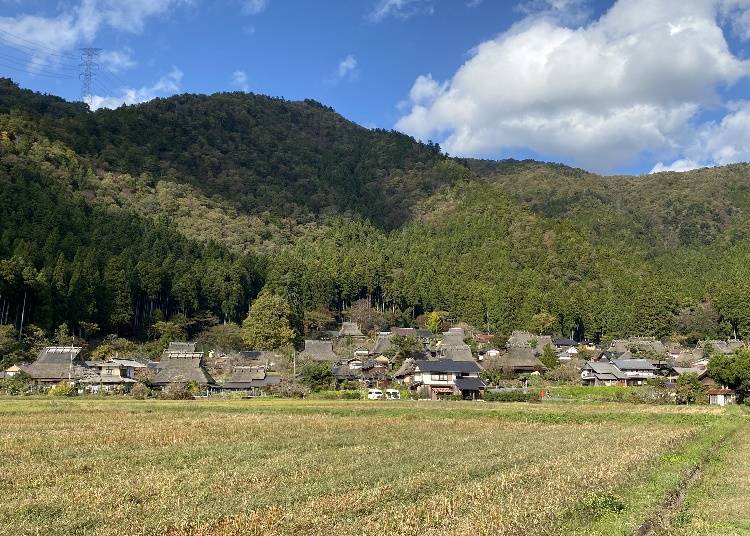
Miyama is situated in Nantan City in the heart of Kyoto Prefecture, said to truly capture the essence and nature of traditional Japanese rural life. It’s about a 1 hr 30 min drive from Kyoto City, and about 2 hours via public transportation (train/bus).

Lined with houses featuring traditional thatched roofs, the area has been designated as a National Important Preservation District for Groups of Traditional Buildings and has received the Sustainable Tourism Award. It is so well-recognized that locals will say, “In Kansai, when you think of thatched roofs, you think of Miyama.”
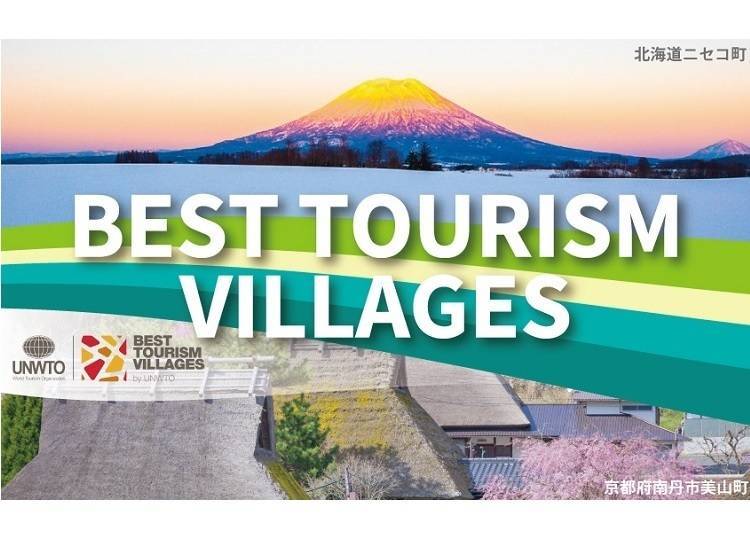
In 2021, the UN World Tourism Organization (UNWTO) certified the region as a ‘Best Tourism Village,’ drawing attention from all around the world.
(*The ‘Best Tourism Village’ project acknowledges regions that are working to promote, preserve, and develop natural and cultural heritage through tourism in alignment with the Sustainable Development Goals (SDGs).)
What is the Climate in Miyama?
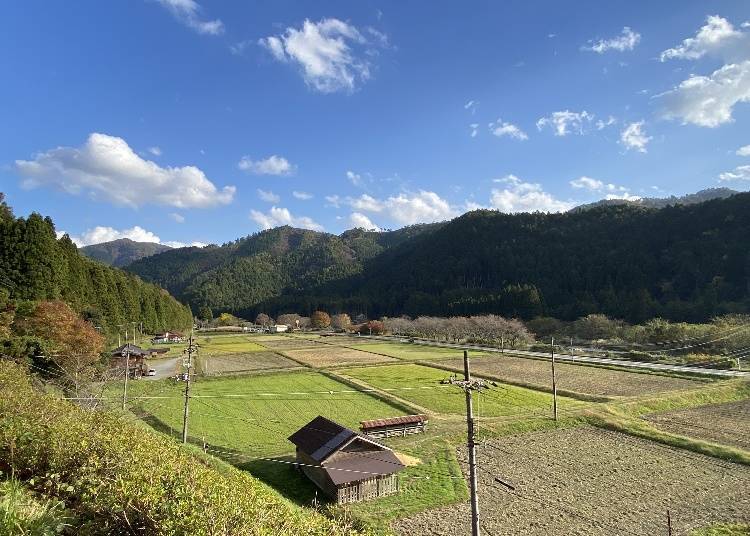
The area has a climate of high rainfall and humidity all throughout the year, with 96% of the area covered in forests and surrounded by mountains, preserving a wealth of natural beauty. As a result, temperatures average 2 to 3°C lower than in urban areas, leading to substantial snowfall during the winter.
- By Car: Approx. 1 hr 30 min from Kyoto City
- By Train: Take JR San-in Line from Kyoto Station to Sonobe Station, then transfer to Hiyoshi Station. From there, take Nantan City Bus (approx. 2 hours).
- By Bus: Kyoto Miyama Line offers a direct bus service from Kyoto Station. (*Reservation priority, seasonal operation only)
3 Must-See Tourist Spots in Miyama
1) Miyama Kayabuki-no-Sato: An Authentic Japanese Countryside Landscape
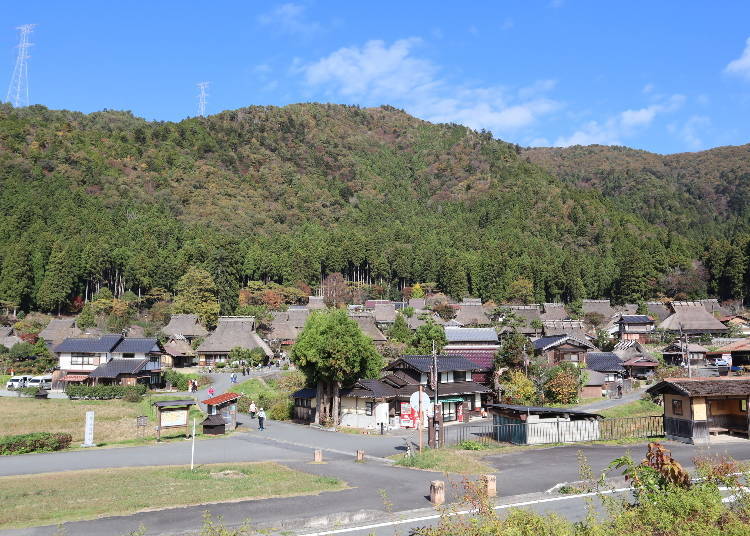
One must-see attraction in Miyama is the collection of thatched-roof houses. The ‘Kita’ village, home to numerous well-preserved thatched-roof houses, has also earned recognition as a National Preservation Area for Important Traditional Buildings back in 1993. It’s fondly referred to as ‘Miyama Kayabuki no Sato’ (Miyama’s Village of Thatched-Roof Houses).
-

-
Address
Miyamachokita, Nantan-shi, Kyoto, 601-0712
View Map -
Nearest Station
Wachi Station (JR San-in Line)
33 minutes by bus
- Phone Number 0771-77-0660
-
Address
Miyamachokita, Nantan-shi, Kyoto, 601-0712
2) Ono Dam Park: Gorgeous Cherry Blossoms and Autumn Leaves
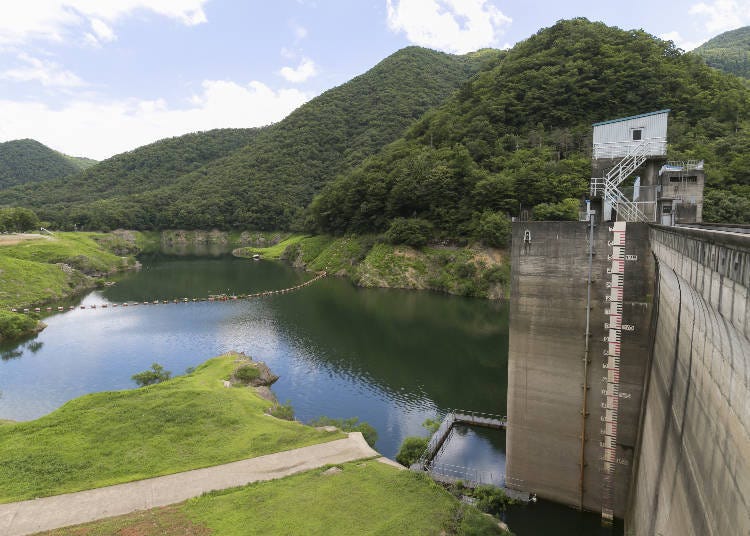
The Ono Dam, constructed in the upstream area of the Yurakawa River, features walking paths and parks in the surrounding area. It's a scenic spot with over 1,000 cherry blossom trees and more than 500 maple trees, making it the perfect spot for viewing the cherry blossoms and autumn leaves. Cherry blossom festivals are held in the spring, with maple leaf festivals held in the fall.
-
Ono Dam大野ダム
- Address 41-2, Kashihara Nakanoyama, Miyama-cho, Nantan-shi, Kyoto 601-0777
3) Furatto Miyama: Loaded with Local Specialties! Roadside Station Miyama Fureai Hiroba
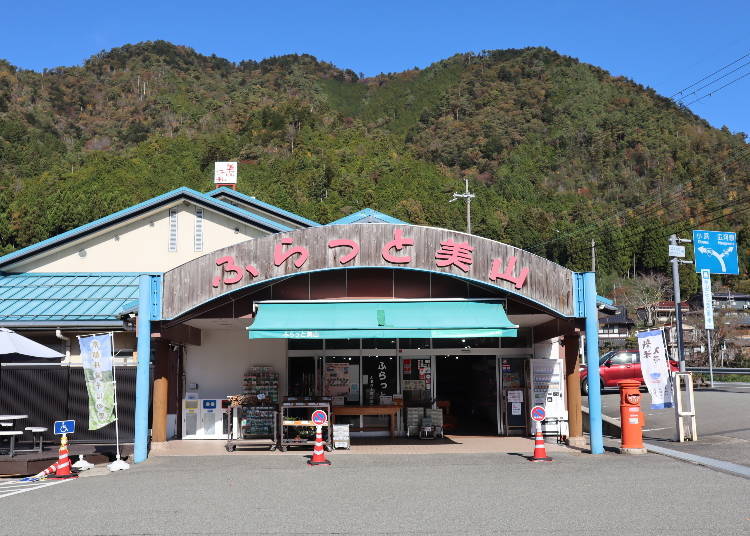
At Furatto Miyama, located at the Roadside Station Miyama Fureai Hiroba, you can find a variety of local Miyama produce and gourmet, as well as souvenirs.

In addition to the products and ingredients introduced here, the store offers a large selection of fresh vegetables and other specialties of Miyama. The shop is frequented not only by tourists but by lots of locals, as well.
-
Furatto Miyamaふらっと美山
- Address 23-2, Yasukakegashita, Miyama-cho, Nantan-shi, Kyoto 601-0722
- Phone Number 0771-75-0190
・Hours: April-September: 8:30 AM - 6 PM / October-March: 8:30 AM - 5 PM
・Closed: January-February: Wednesdays (except last week of January), March-November: Open year-round, December: 3rd Wed. of the month / Year-end & New Year holidays (open until 3 PM on December 30)

You can also enjoy some soft-serve ice cream and gelato at Miyama no Megumi Milk Studio, also located at Miyama Fureai Hiroba Roadside Station.

As a sucker for soft-serve ice cream myself, I couldn't resist sampling their classic soft-serve. It had an incredibly rich and creamy texture and sweet milk flavor, and was quite possibly the best soft-serve I've ever had in my life!

There are many other gelato flavors available, so if you feel that one flavor alone won’t be enough to satisfy you, go ahead and mix and match the different kinds!
-
Miyama no Megumi Milk Studio美山のめぐみ牛乳工房
- Address 23, Yasukakegashita, Miyama-cho, Nantan-shi, Kyoto 601-0722
- Phone Number 0771-75-0815
・ Hours: 10 AM - 4 PM
・ Closed: 3rd Mon. of the month / Every Mon. from December-March / Year-end & New Year's holidays (Closed December 25 - January 4)
Indulge in Unforgettable Flavor! 5 Must-Try Foods in Miyama
Blessed with an abundance of nature, Miyama offers a wide variety of local specialties and gourmet foods sourced from its rivers and mountains, as well as seasonal offerings. The following delicacies are a must-try.
Ayu (Sweetfish)
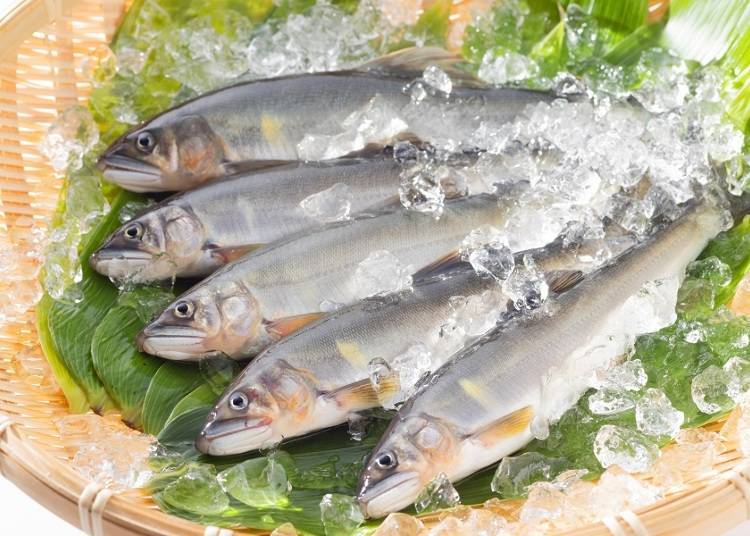
Ayu, or sweetfish, is a specialty of Miyama, and is practically synonymous with the town itself. The sweetfish caught in the clear waters of the Yura River that flows through the town have garnered national acclaim, winning awards at ayu tasting contests. But the season for sweetfish is limited, from early June to September, so we recommend visiting during this period if you want to taste it for yourself!
Rice & Sake
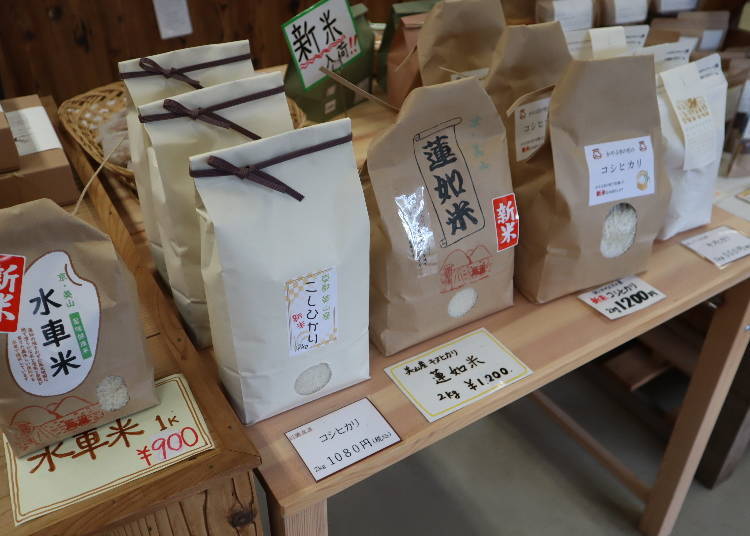
Where there is clean water, there is also good rice. I personally purchased rice from here, cooked it, and found it to be unforgettably delicious!

There’s also a large selection of sake made from this rice.
Deer, Wild Boar, and Other Game

In Miyama, surrounded by mountains and forests, the assortment of game meats captured by local hunters and expertly prepared is truly exceptional.
Fresh meats like deer and wild boar are devoid of unpleasant odor and have a distinctive deliciousness. Because the availability of these meats fluctuates with the seasons, they may not always be on sale or on the menu, so if you come across them, consider them a must-try foodie experience!
Miyama Milk & Dairy Products
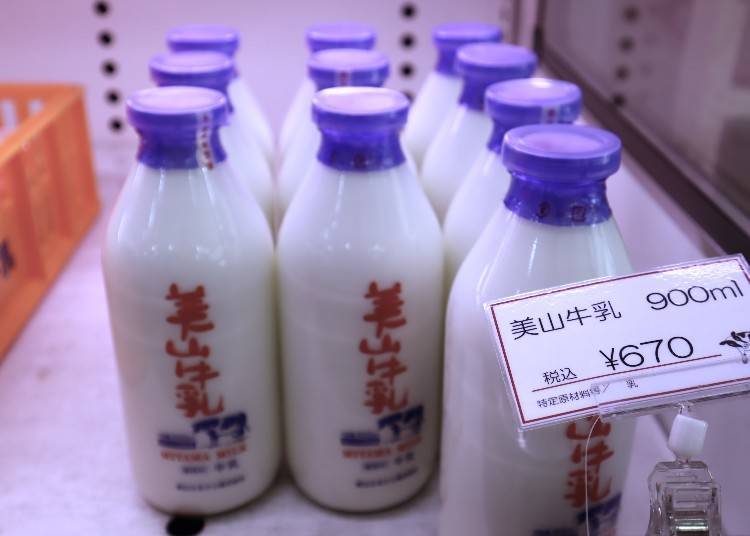
Benefiting from the pristine air, water, and natural surroundings, Miyama milk is produced using only raw milk sourced from cows raised by local Miyama dairy farmers. The milk is pasteurized, giving it an outstanding sweetness, and a rich, delicious taste.

Not only the milk itself, but also the cheese, yogurt, soft-serve ice cream, milk pudding, and cheesecake made from this milk are delightfully delicious!
Jidori Chicken & Heirloom Eggs

Jidori chickens, raised in the open countryside environment known for its clean air, pristine streams, and free-range grazing, boast a robust flavor and firm meat. Similarly, heirloom eggs laid by the chickens raised here are rich and full of flavor.

Oyako-don (chicken and egg rice bowl) and tamago-kake gohan (egg over rice), made with these high-quality jidori chicken and eggs, are other recommended dishes worth trying. Most of the Miyama foods introduced here can be purchased at Furatto Miyama.
What are the Best Seasons, Events, and Sightseeing Spots in Miyama?
Surrounded by nature, Miyama offers remarkable scenery that transforms with every season—spring, summer, fall, and winter—making it an ideal destination throughout the year.
Each season brings its own festivals, events, and activities to enjoy. May and December mark the biannual synchronized water hose spraying event. Summer is the best time to chill out in the river and enjoy the fire festival. And winter brings the enchanting snow lantern display at Miyama Kayabuki-no-Sato. These unique highlights make a visit to Miyama during these times especially worthwhile!
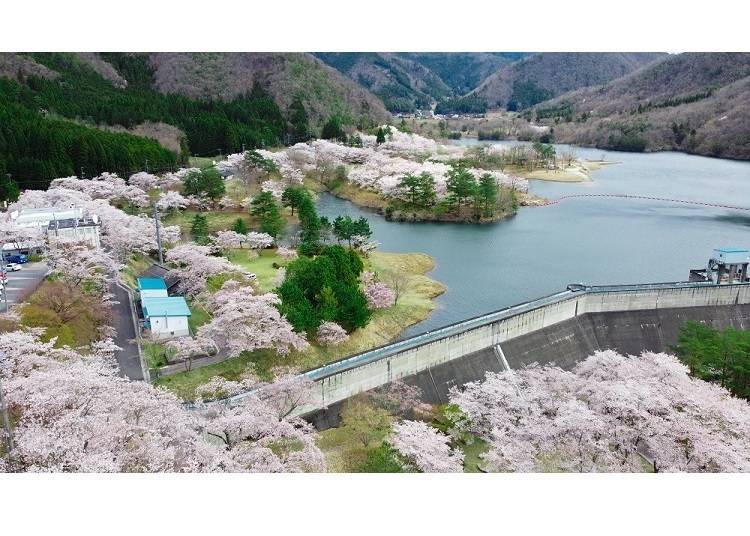
Spring: A time when beautiful greenery and cherry blossoms adorn the mountains. The cherry blossom festival held at Ono Dam features more than 1,000 cherry trees!
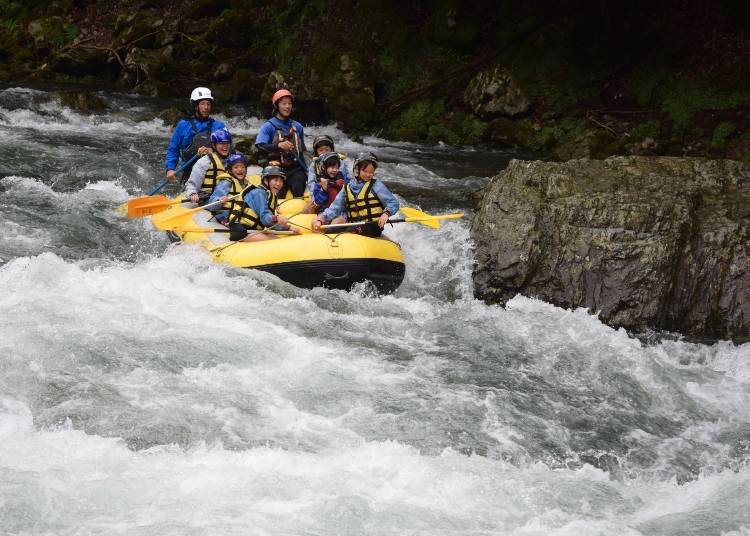
Summer: Enjoy popular river activities along the Yurakawa, flowing through the town. Activities like river rafting, snorkeling, and climbing offer refreshing escapes from the heat. There are also events such as blueberry picking and sweetfish catching, as well as the traditional Age-matsu fire festival, dedicated to praying for a bountiful harvest and showing gratitude to farmers.
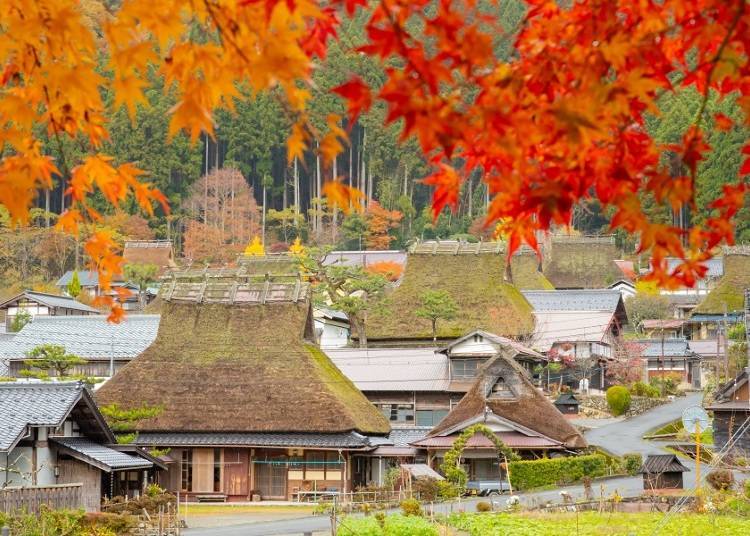
Autumn: Witness the vivid and stunning landscapes along the river and amidst the mountains. The trees at Ono Dam are colored with a blaze of autumnal hues, with a Maple Festival usually held every year.
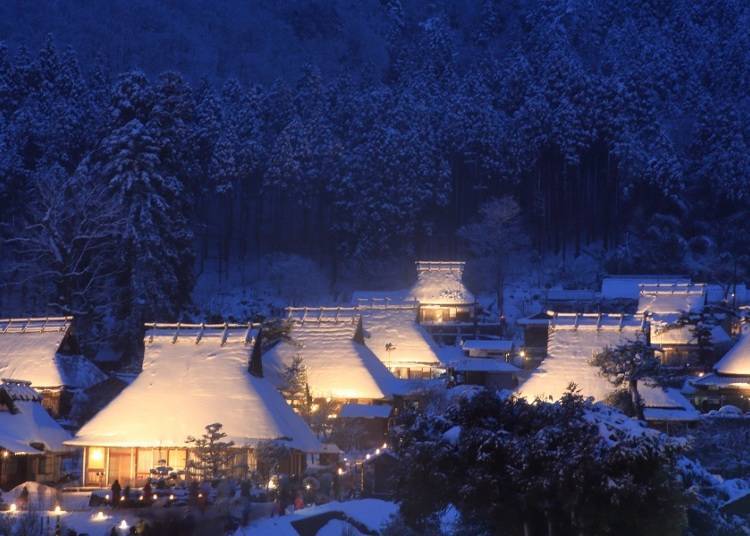
Winter: This is the time of year to embrace the harsh cold and falling snow that come together to paint a stunning landscape. The winter Miyama Kayabuki-no-Sato Snow Lantern Festival is especially wonderful, where illuminated thatched-roof houses blanketed in white snow create a magical atmosphere, followed by a fantastic display of fireworks.
Miyama Kayabuki-no-Sato: A Must-Visit Miyama Destination

Miyama Kayabuki no Sato was designated as a national Important Preservation District for Groups of Traditional Buildings in 1993. Although it is a sightseeing spot, people still inhabit the village, preserving its traditional landscape and rural lifestyle. In fact, 39 of the kayabuki houses in the village are still in use! This town is a unique place where visitors can get a rare, close-up glimpse into actual village life in Japan.

The village can be explored on foot in about an hour. However, to fully appreciate the experience, plan to spend at least half a day in the village, so you can relax in the cafes, savor meals in the restaurants, and enjoy a stroll around the shrines and museums.
- Train/Bus: Take JR Sanin Line from Kyoto Station to Hiyoshi Station, then transfer to Nantan City Bus. Get off at Kayabuki-no-Sato bus stop.
- Direct Bus: Kyoto Miyama Line offers a direct bus service from Kyoto Station. *Reservation priority, seasonal operation only
What Can I See and Experience?
Here are some of the highlights of Kayabuki-no-Sato.
1) Miyama Folk Museum

Located in Kayabuki-no-Sato, this museum showcases the construction of kayabuki thatched roofs, and how people lived nearly 200 years ago.

Now, there are valuable household items, furniture, and clothing on display.

It feels as if we have stepped back in time.

Climbing into the attic, the intricate design of the thatched roof is exposed. The Japanese “kayabuki,” or “thatching” technique has been registered as a UNESCO Intangible Cultural Heritage since 2020, highlighting the exceptional skills of the craftsmen who meticulously construct these roofs by hand.
-
Miyama Folk Museum美山民俗資料館
- Address 4 Kitanakamaki, Miyama-cho, Nantan-shi, Kyoto 601-0712
- Phone Number 077-177-0587
・ Hours: December-March: 10 AM - 4 PM / April-November: 9 AM - 5 PM / *Currently operating on shortened hours: 10 AM - 4 PM
・ Closed: Mondays / Year-end and New Year holidays
・ Admission: Adults: 300 yen / Elementary & junior high students: Free
2) Red Circular Post & Jizo Statue

The vintage red post boxes and adorable Jizo-san statues, a rarity in modern Japan, are highly recommended as photo spots.

They must have been watching over this village for a long time.
3) Water Hoses

One of the distinctive features of Miyama, known for its thatched houses, is the the installation of water hoses in each residence. Due to the vulnerability of thatched roofs to fire, fire prevention is a top priority.
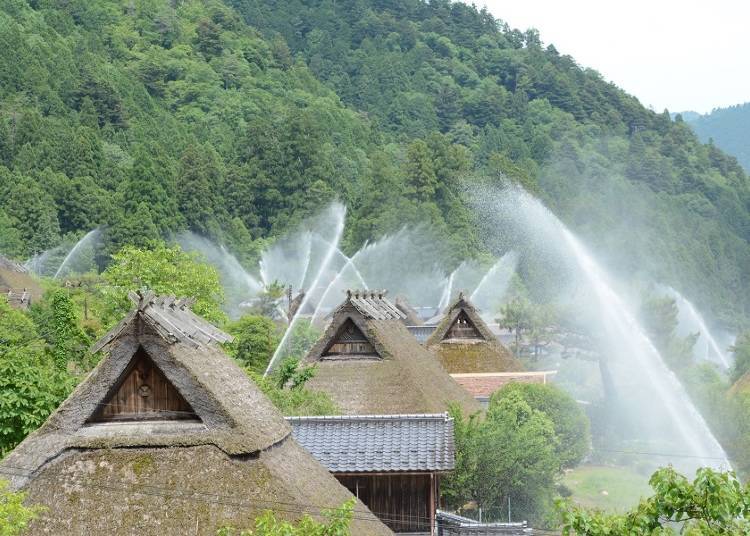
The biannual simultaneous water spraying event, conducted for inspection purposes, is a significant happening that draws numerous attendees from across the country. (*Advance parking reservations required on day of event.)
4) Yurakawa (Miyama River)

The Yurakawa, also known as the Miyama River, flows through the town of Miyama. The month of May marks the beginning of the fishing season for sweetfish, one of their local specialties.
5) Japanese Horse Chestnut at Kita Inari Shrine

There is a famous horse chestnut tree in Miyama that resides within the Kita Inari Shrine. This tree, believed to be 400 years old, has been recognized as a natural monument by Nantan City.
-
Kita Inari Shrine北稲荷神社
- Address 23 Kitashimomaki, Miyama-cho, Nandan-shi, Kyoto, 601-0712, Japan
6) Chiihachiman Shrine

The Chiihachiman Shrine stands out with its striking white torii gate, visible from a distance.

This shrine has ancient origins steeped in enduring legends. Its main shrine has been designated as a cultural asset by Kyoto Prefecture.

The intricate carvings adorning the main hall are truly a sight to behold. Believed to bestow blessings for safe travels, it's another must-see spot when visiting Miyama.
-
Chiihachiman Shrine知井八幡神社
- Address 31-1 Miyanomoto, Miyama-cho Kita, Nantan-shi, Kyoto, 601-0712, Japan
6) Souvenir Shop Kaya-no-sato

If you're looking for souvenirs from Miyama Kayabuki-no-Sato, then Souvenir Shop Kaya-no-sato is the place to go!

The shop offers a diverse array of Miyama specialties, including rice, jams, sweets, and crafts.

They also feature original sweets and postcards exclusive to Kayabuki-no-Sato. Local favorites include dumplings and rice cakes made from locally-grown mochi and millet.

Some of the less common finds include their buckwheat and buckwheat teas, sourced directly from the buckwheat fields in Kayabuki-no-Sato right in front of the restaurant. For details on other recommended cafes and restaurants in Kayabuki-no-Sato, please refer to the article below.
-
Souvenir Shop Kaya-no-satoお土産処かやの里
- Address 21-1, Kitaageishi, Miyama-cho, Nantan-shi, Kyoto 601-0712
- Phone Number 0771-77-0660
・ Hours: 9 AM - 5 PM / *Currently operating on shortened hours: 10 AM - 4 PM
・ Closed: None (Except year-end / New Year holidays)
Three Reasons to Recommend Miyama
As someone who has explored numerous tourist destinations around the world and in Japan, here are three reasons why a visit to Miyama comes as highly recommended. As a Tokyo native, I find solace in its peaceful natural surroundings and tranquil atmosphere, making it an ideal retreat to recharge whenever needed.
1) The Idyllic Japanese Landscape

Houses featuring kayabuki roofs are increasingly rare and treasured in Japan nowadays, offering a comforting glimpse into the country’s nostalgic past for modern-day individuals.
2) Lots of Local Delicacies and Souvenirs

Food is often a central focus of traveling, and Miyama offers an extensive, well-balanced array of local delicacies, from vegetables, meat, fish, milk, buckwheat, and rice, to sake. All of these dishes boast the delicious Japanese flavors sought after by foreign visitors, representing traditional home-style cuisine deeply rooted in the Japanese way of life. Here, visitors can savor everything from the pure water and fresh air to delicious culinary delights that you won’t find in famous central restaurants or listed in guidebooks.
3) Easy to Visit for Anyone

Miyama is actively committed to promoting tourism throughout the region, with a well-curated tourist information website and map, and ongoing efforts being made to introduce multilingual support. We highly recommend Miyama for its accessibility, catering to tourists of all ages, genders, and backgrounds, including families with children.
Miyama: A Cultural Heritage Site Brimming with Nature and Scenery
Miyama is a town full of Japanese nature, picturesque landscapes, and cultural heritage that will be preserved for generations to come. Replete with distinctive charms not commonly found in urban areas, or even in other regions in Japan, Miyama boasts a traditional Japanese atmosphere, seasonal spectacles like colorful autumn foliage and beautiful cherry blossoms, and local cuisine shaped by the area’s climate.
With so much to see and do in Miyama, a visit there promises an enriching Japanese experience that will give you a newfound appreciation of the country.
English translation by: Krys Suzuki
Looking for a Stay in Miyama?
Miyu is a travel writer and tour conductor with over a decade of experience in developing educational content for working individuals. She has a passion for exploring new cultures and has visited more than 150 cities in around 50 countries. Her goal is to sample great food, experience nature, enjoy historical sites, and bathe in hot springs around the world. Miyu left her corporate job to pursue her passion for travel and now spends over 100 days a year abroad while working as a writer. She promotes the joy of travel, the beauty of Japan, and the diverse cultures of the world by traveling to different parts of Japan and collaborating with inbound tour operators and fellow travel writers.
- Area
- Category
*Prices and options mentioned are subject to change.
*Unless stated otherwise, all prices include tax.
Recommended places for you
-
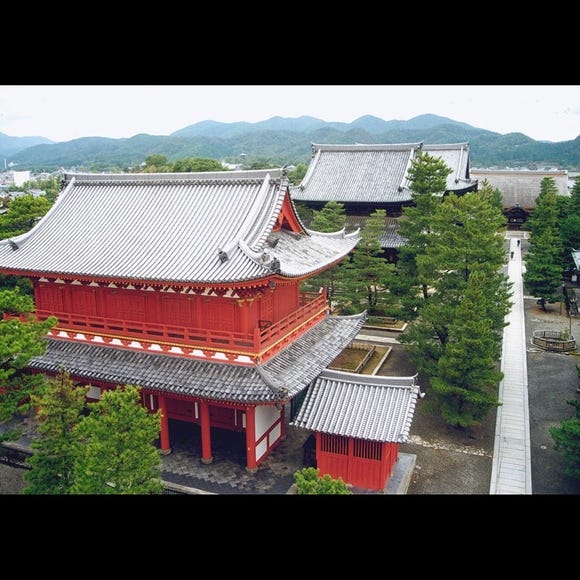
Myoshin-ji Temple
Temples
Arashiyama, Uzumasa
-

ISHIDAYA Hanare
Yakiniku
Kobe, Sannomiya, Kitano
-

Jukuseiniku-to Namamottsuarera Nikubaru Italian Nikutaria Sannomiya
Izakaya
Kobe, Sannomiya, Kitano
-
Goods

Yoshida Gennojo-Roho Kyoto Buddhist Altars
Gift Shops
Nijo Castle, Kyoto Imperial Palace
-

Kanzenkoshitsuyakinikutabehodai Gyugyu Paradise Sannomiya
Yakiniku
Kobe, Sannomiya, Kitano
-

Kambei Sannomiyahonten
Yakiniku
Kobe, Sannomiya, Kitano
-

Experience Hotel New Otani Osaka: Overnight Journey of Japanese Culture and Fine Dining (2-Day Itinerary)
by: Yotsuka Hizuki
-

Yuzuya Ryokan Kyoto Gion: Enjoy Gourmet Dining in a 100-Year-Old Kyoto Townhouse (In-Depth Review)
by: Yotsuka Hizuki
-

Kyoto Prefecture Guide: Destinations, Activities, Travel Advice, Shopping & More
-

Foreign tourists outnumber Japanese ones at Kyoto hotels for first time ever
-

Where to See Fireworks in Osaka & Kansai (July–October 2025)
-
Ad

Visiting the Osaka–Kansai Expo? Enjoy These 5 Great Itineraries from Osaka-umeda for Nature and City Lovers
Inspiration for Accommodations
-

Spacious Family Hotel in Namba: 20 Comfortable Stays for Family Fun
-

Charming Hotels to Enjoy the Spectacular Views of Arashiyama's Autumn Leaves from Your Room
-

Experience Stunning Views of Osaka Castle from Private Spaces: Top Hotels Near Osaka Castle
-

Recommended by Visitors! Arashiyama's Best-Rated Hotels
-

Family-Friendly Universal Studios Japan Hotel with Excellent Access
-

Enjoy a Comfortable Stay in Osaka! 10 Hotels with Convenient Airport Shuttle Services
-

Top 10 Recommended Hotels Near Namba Station with Great Access
-

Enjoy Night Views from Your Room! Recommended Hotels in Namba Area
-

Kichijoji – Explore Tokyo’s Top-Rated Stylish Suburb in Half a Day!
-

JR Edition: Visit all of Tokyo in one Day with the Tokyo Metropolitan District Pass!
-

5 Must-Visit Nara Temples and Shrines: Discover the Timeless Beauty of Japan's Ancient Capital
by: WESTPLAN
-

Top 3 Restaurants: Best Sushi in Dotonbori According to a Local Food Critic
-

What to Pack for Japan: 8 Essential Things for a Hassle-Free Trip
-

3 Best Hotels in Kobe, Japan with Amazing Views of Kobe Bay!
- #best gourmet Osaka
- #things to do Osaka
- #what to do in kyoto
- #what to bring to japan
- #best gourmet Kyoto
- #new years in Osaka
- #what to buy in nanba
- #Visiting Osaka
- #onsen tattoo friendly arima
- #daiso
- #Visiting Kyoto
- #best japanese soft drinks
- #japanese fashion culture
- #japanese convenience store snacks
- #japanese nail trends















